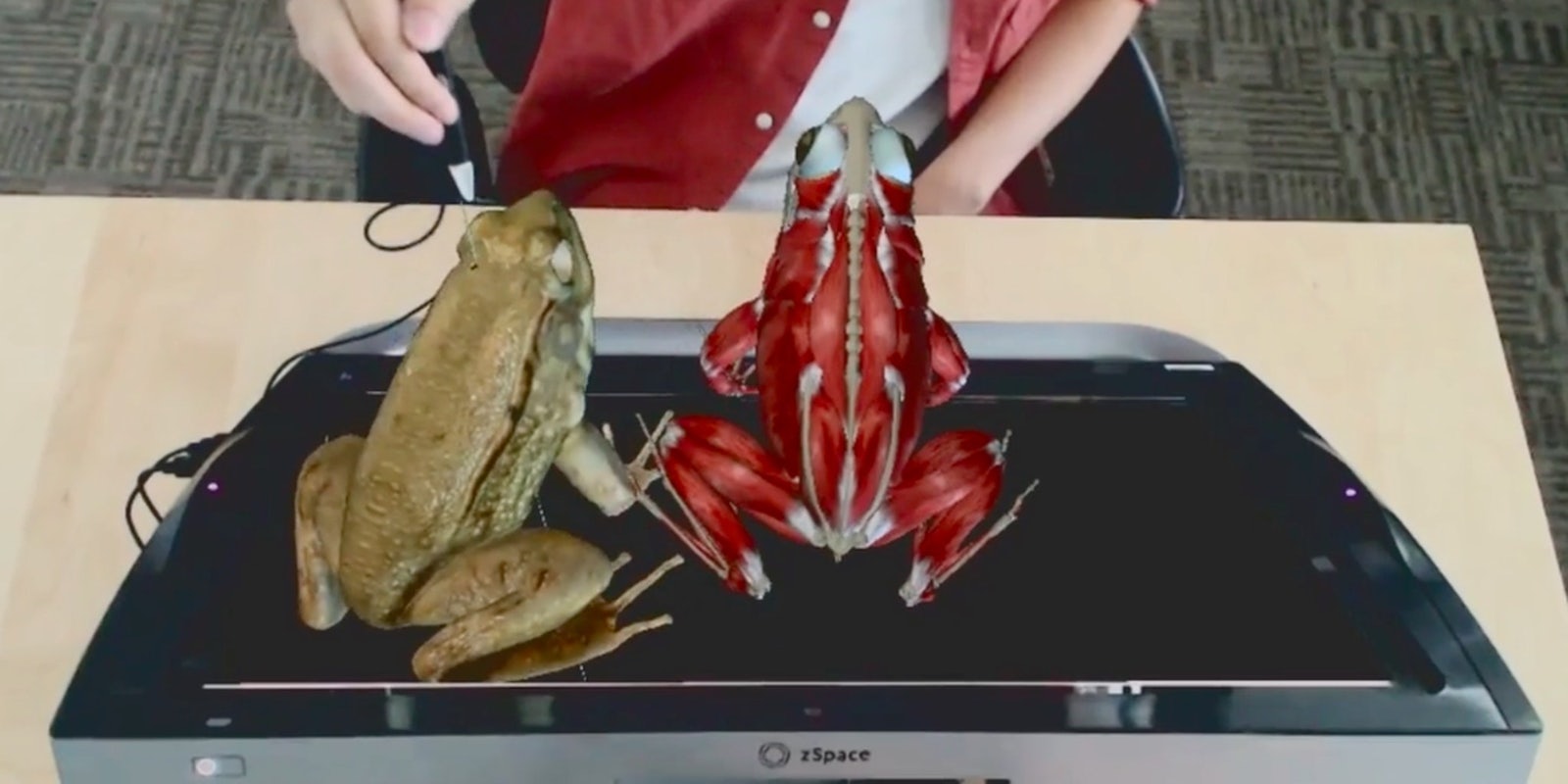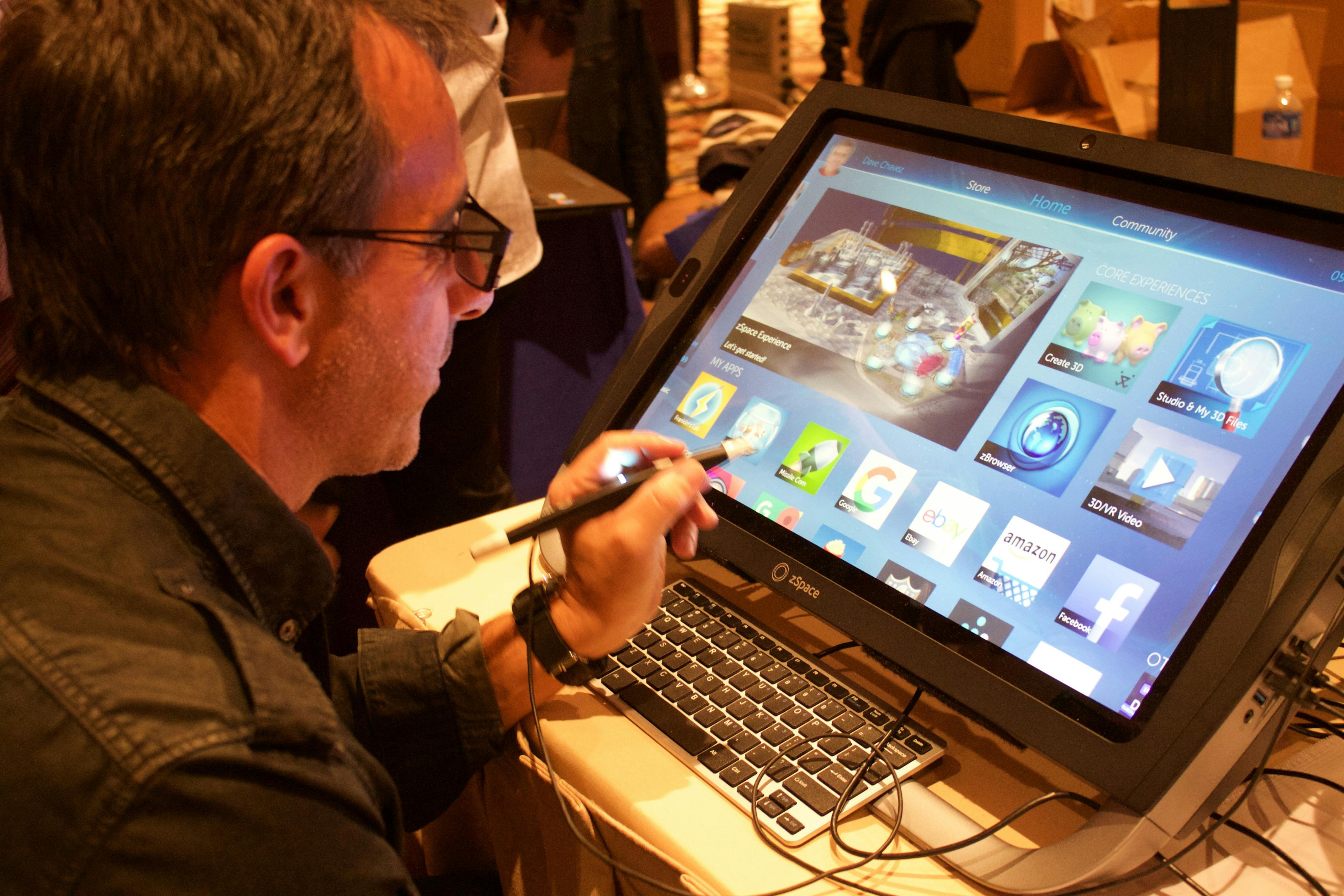“You have to try it to believe it,” David Chavez, CTO of zSpace told me in an interview at this week’s CES. He sat me down in front of a giant computer screen, handed me glasses and a stylus, and showed off a world of tabletop virtual reality.
The company’s VR platform makes it possible to pick up and play with content in virtual spaces without needing to wear a bulky headset or gesture with game controllers. I used the stylus to maneuver through chambers of a heart and pick up tiny pieces of a robotic mechanical arm. The 3D renderings popped right out at me, and I could turn my head to peek beneath the organ’s left ventricle or spin the nuts and bolts holding the arm together.
ZSpace’s platform, which includes a desktop computer, glasses, stylus, and a slew of built-in apps, was initially geared towards students. Now the company is getting ready to release its first consumer product, bringing collaborative VR to the home.
“Browsers are the biggest single item that has potential to take VR to the mainstream,” Paul Kellenberger, CEO of zSpace, said in an interview with the Daily Dot.
While the heart and robot demonstration existed within the confines of the app zSpace built to make people comfortable with how the tech works, interacting directly with content in a Web browser underscored Kellenberger’s conjecture. Browsing Facebook and Amazon in VR was as simple as scrolling through the News Feed on a mobile device—but much more engaging.
ZSpace worked with Google’s WebGL team to develop a special browser that shows the potential for VR in the mundane online activities we participate in daily, like talking about our dinner.
Chavez uploaded a 360-degree photo of his evening meal to Facebook, and the experimental browser interpreted it to show the photo in 3D when clicked on. I picked up his plate of chicken and potatoes and spun it around right in the Facebook News Feed, seeing the food from every angle.
On an Amazon Web page, I picked up a watch and changed the colors of the face and band, turning the watch around like it was physically in my hands.
Unlike VR headsets I’ve tested that often feel bulky and restrictive to the outside world, zSpace’s simple glasses ran no interference between me and the conversation I was having with Chavez while interacting with the virtual items. They felt similar to the 3D glasses theaters provide, but they’re obviously much more high-tech.
The computer system tracks the position and orientation of the glasses so it renders objects correctly when you pick them up. This is what allowed me to pick up a heart with the stylus, and move my head to view it from all different angles.
ZSpace can elevate the Web experience Kellenberger said, and apps from Unity, Unreal, and OGRE run natively on the system.
The computer setup is already quite popular with educational institutions like Fujitsu University in Japan, where students are digitally modifying sugar levels to detect how it affects the blood chemistry in the heart. But the company will soon offer the system for home use. The zSpace will be available in the third quarter of 2015 with a hefty price tag: $1,500 for the kit.
Photo via zSpace

